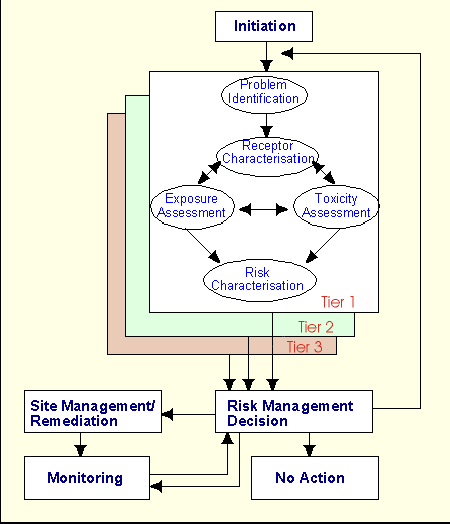|
Risk assessment fundamentals Limitations of risk assessment
|
IntroductionRisk assessment (RA) is a technique by which the actual or potential adverse effects of contaminants on plants, animals, or ecosystem integrity can be assessed in a systematic fashion. Essentially risk assessment asks the question:
What is the Objective of Undertaking a Risk Assessment?The objective of carrying out a risk assessment is to determine whether any identified people or ecological values are likely to be adversely affected by soil, water, or air contamination. This will enable land managers to make decisions about managing contaminant risks on sites of concern. Fundamental ConceptsRisk assessment techniques are based on a causal stress-response model in which a contaminant is transported from a source through a known pathway to a receptor (people, plants, animals). Source
This concept forms the basis of risk assessment methods that have been developed internationally to help manage the impacts of contaminated sites. Risk assessment for human health is largely similar in scope and methodology to ecological risk assessment. However in practice, the former may be somewhat simpler due to the fact that only people are being considered as receptors. The five components of a risk assessment include:
Risk assessment can be undertaken at three distinct levels of detail, known as "Tiers'. At each tier, the five key tasks, are undertaken to provide information and data. That information and data is then used to make a risk management decision or to decide whether it is necessary to proceed to the next tier because more detail is required. Broadly, the degree of detail and quality of the data at each tier can be described as: The role of risk assessment within a broader risk management framework is illustrated below.
|
![]()
